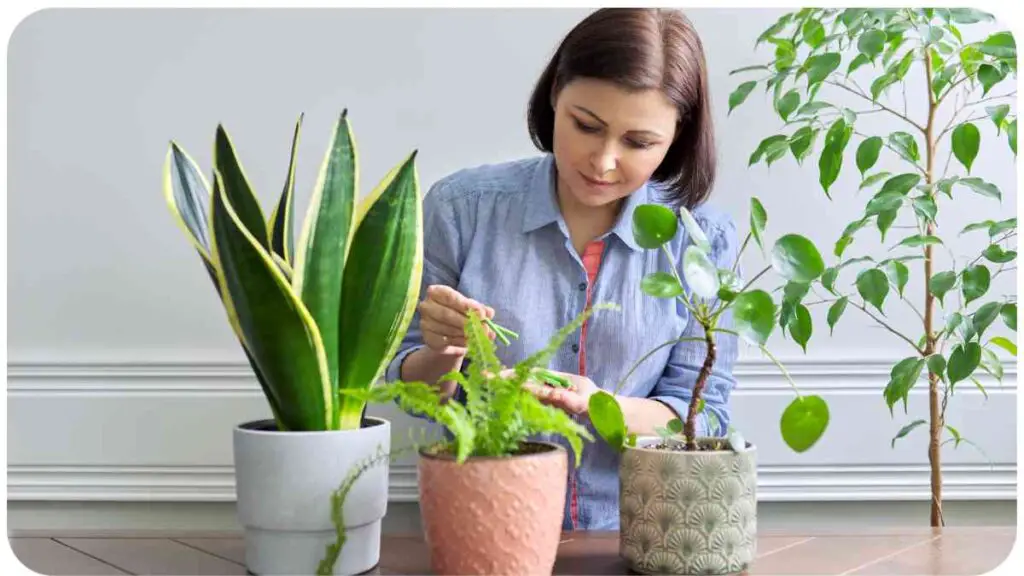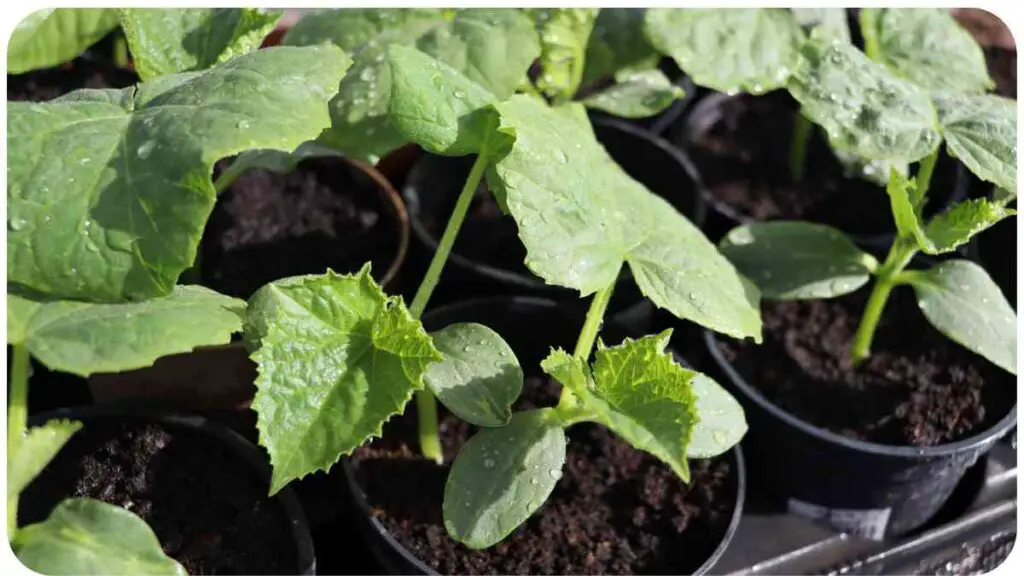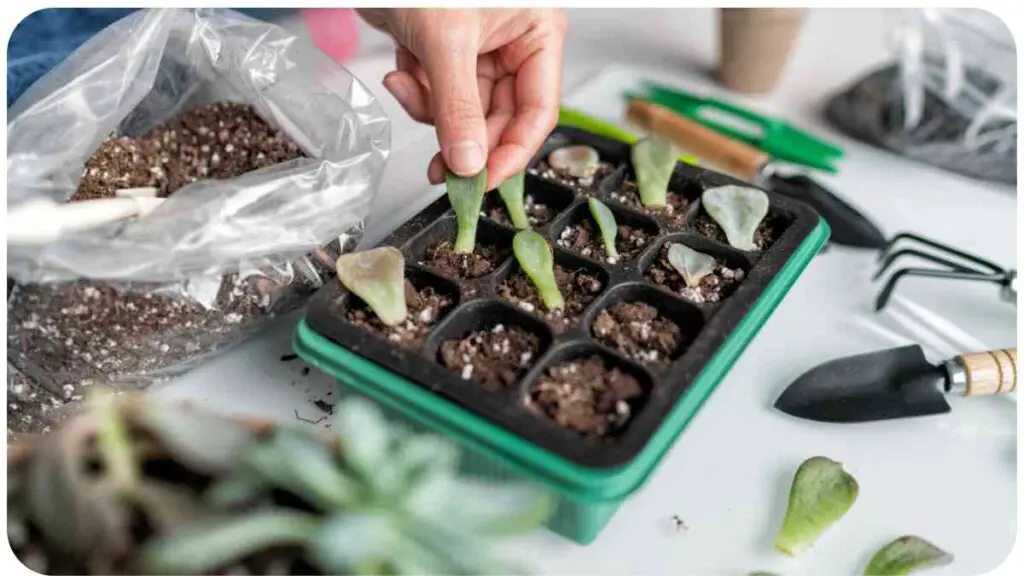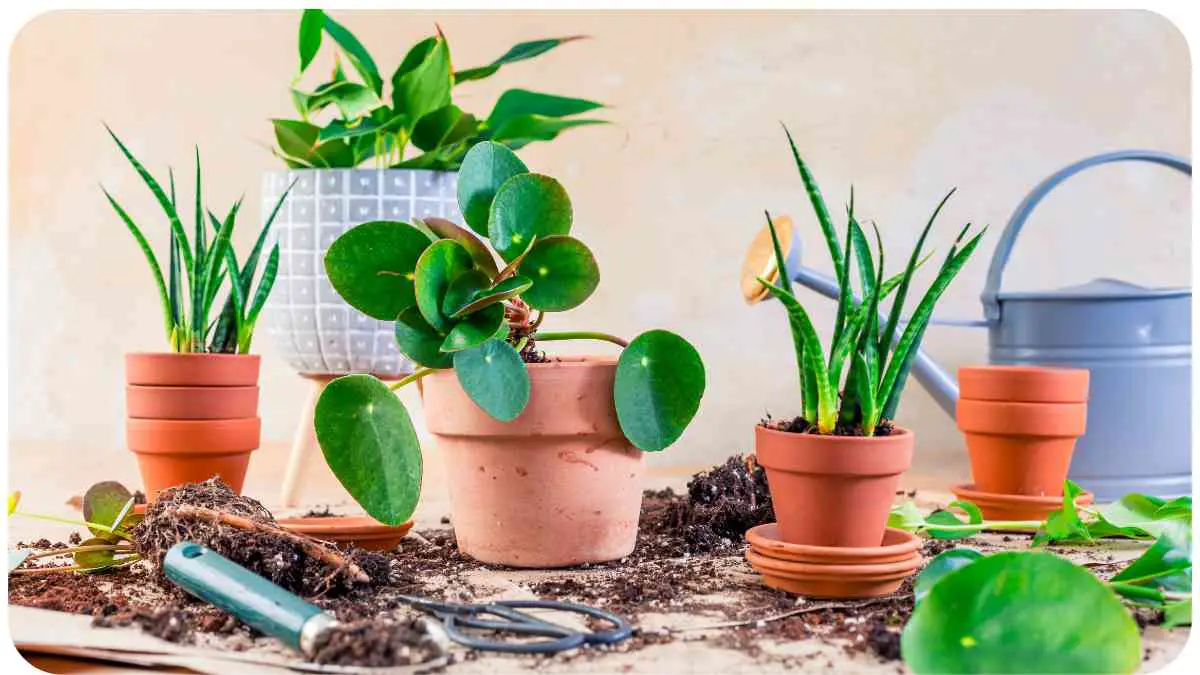When it comes to nurturing healthy potted plants, one of the most critical elements is selecting the right fertilizer. Fertilizer provides essential nutrients that plants need to thrive, especially in the confines of a container environment.
In this article, we’ll delve into the intricacies of selecting the best fertilizer for your potted plants, considering various factors such as plant type, nutrient requirements, and environmental conditions.
| Key Takeaways |
|---|
| 1. Selecting the right fertilizer is crucial for the health and growth of potted plants. |
| 2. Consider factors such as plant type, nutrient requirements, and environmental conditions when choosing a fertilizer. |
| 3. Synthetic and organic fertilizers both have their advantages and drawbacks, so choose based on your preferences and gardening philosophy. |
| 4. Monitor plants closely for signs of overfertilization and adjust your fertilization regimen accordingly to prevent damage. |
| 5. Experiment with DIY fertilizer recipes for a cost-effective and environmentally friendly alternative to store-bought fertilizers. |
2. Understanding the Importance of Fertilizing Potted Plants

Potted plants rely solely on the nutrients available in their potting mix, unlike garden plants that can draw nutrients from the surrounding soil. Over time, these nutrients become depleted, necessitating the use of fertilizer to replenish them. Without adequate fertilization, potted plants may exhibit stunted growth, yellowing leaves, and diminished flowering or fruiting.
When planning your flower garden, selecting the right soil is crucial. Optimal soil composition ensures healthy plant growth, vibrant blooms, and robust root systems. Understanding soil types and their benefits is essential for gardening success.
3. Types of Fertilizers for Potted Plants
Synthetic Fertilizers
Synthetic fertilizers are manufactured from inorganic compounds and are typically available as granules, pellets, or liquids. They are formulated to deliver precise concentrations of specific nutrients and are often favored for their immediate availability to plants.
| Fertilizer | Nutrient Composition | Pros | Cons |
|---|---|---|---|
| 10-10-10 | Balanced NPK ratio | Quick-release nutrients, easy application | Risk of nutrient runoff and leaching |
| Miracle-Gro All Purpose Plant Food | Balanced NPK ratio with micronutrients | Promotes lush foliage and vibrant blooms | High salt content can harm plants if overused |
Organic Fertilizers
Organic fertilizers are derived from natural sources such as plant matter, animal byproducts, or minerals. They tend to release nutrients more slowly, providing a steady supply over time while also improving soil structure and microbial activity.
Choosing the perfect potting mix for your flowers can make or break their health. A blend that provides proper drainage, aeration, and nutrients is key. Explore various potting mixes to find the ideal one for your floral beauties.
| Fertilizer | Nutrient Composition | Pros | Cons |
|---|---|---|---|
| Fish Emulsion | High in nitrogen | Provides a quick boost of nutrients, improves soil fertility | Strong odor, may attract pests |
| Compost Tea | Balanced nutrient profile | Nourishes plants and enhances soil health | Requires time and effort to prepare |
4. Key Nutrients for Potted Plants

Understanding the essential nutrients required by potted plants is crucial for selecting the right fertilizer. The primary nutrients, known as N-P-K, are nitrogen (N), phosphorus (P), and potassium (K), each playing a distinct role in plant growth and development.
Nitrogen (N)
Nitrogen is responsible for promoting leafy growth and overall plant vigor. It is crucial for the synthesis of chlorophyll, the green pigment that facilitates photosynthesis.
Phosphorus (P)
Phosphorus plays a vital role in root development, flower formation, and fruiting. It is particularly important during the early stages of plant growth and for promoting robust root systems.
Good drainage is essential for indoor plants to thrive. Discover tips and tricks to achieve well-draining soil. Proper moisture control prevents root rot and promotes healthy growth for your beloved houseplants.
Potassium (K)
Potassium contributes to various physiological processes within plants, including water uptake, enzyme activation, and disease resistance. It helps regulate internal water balance and enhances overall plant resilience.
5. Factors to Consider When Choosing a Fertilizer
Several factors should influence your choice of fertilizer for potted plants, ensuring optimal growth and health.
Plant Type and Needs
Different plants have varying nutrient requirements. Research the specific needs of your potted plants to determine the appropriate fertilizer formulation.
Soil Type and pH
The pH level of your potting mix can affect nutrient availability to plants. Conduct a soil test to determine the pH and adjust it as necessary to optimize nutrient uptake.
Environmental Factors
Consider environmental factors such as sunlight exposure, temperature, and humidity, as these can influence nutrient requirements and fertilizer effectiveness.
6. Best Fertilizers for Different Types of Potted Plants
The best fertilizer for your potted plants depends on factors such as plant type, growth stage, and individual preferences. Here are some recommendations for common scenarios:
Preventing root rot in houseplants requires proactive measures and careful attention. Learn effective strategies to maintain optimal soil moisture levels and ensure adequate airflow around roots. Protect your indoor greenery from this common and potentially fatal condition.
Indoor Houseplants
Indoor houseplants often benefit from balanced fertilizers with a 10-10-10 or 20-20-20 NPK ratio. Look for formulations designed specifically for indoor use, as they may contain additional micronutrients to support foliage growth and flowering.
Outdoor Container Plants
For outdoor container plants, consider slow-release fertilizers that provide a steady supply of nutrients over an extended period. Organic options like compost or manure-based fertilizers can enrich the soil and improve overall plant health.
7. How to Apply Fertilizer to Potted Plants
Proper application of fertilizer is essential to prevent nutrient imbalances and avoid harming your plants.
Frequency and Timing
Fertilize potted plants during their active growing season, typically in spring and summer. Follow the manufacturer’s recommendations for frequency, adjusting based on plant response and environmental conditions.
Application Methods
Apply fertilizer evenly across the soil surface, avoiding direct contact with plant foliage to prevent burning. Water the plants thoroughly after fertilizing to ensure proper nutrient absorption.
Stay tuned for the next part!
8. Signs of Overfertilization and How to Correct It
While fertilizer is essential for plant health, overapplication can lead to nutrient imbalances and toxicity, manifesting in various symptoms.
Signs of Overfertilization
- Leaf Burn: The edges of leaves may become scorched or brown, indicating excessive salt buildup.
- Stunted Growth: Despite regular fertilization, plants may exhibit slowed growth or development.
- Nutrient Deficiency Symptoms: Ironically, overfertilization can cause nutrient deficiencies as excess nutrients interfere with the uptake of other essential elements.
How to Correct Overfertilization
If you suspect overfertilization, take immediate action to mitigate damage and restore plant health.
- Flush the Soil: Water the affected plants thoroughly to leach excess salts from the soil.
- Reduce Fertilizer Frequency: Adjust your fertilization schedule to prevent further buildup of nutrients.
- Monitor Plant Response: Observe your plants closely for signs of recovery and adjust care practices accordingly.
9. DIY Fertilizer Recipes for Potted Plants

For those who prefer a more hands-on approach, creating homemade fertilizers can be both cost-effective and environmentally friendly. Here are a few DIY fertilizer recipes to try:
Eggshell Fertilizer
- Crush dried eggshells into fine powder.
- Mix the eggshell powder into the potting mix or sprinkle it around the base of plants.
- Eggshells provide calcium, which is beneficial for plant cell structure and disease prevention.
Effective pest control is crucial for indoor plants’ health. Explore comprehensive guidance on safe and effective sprays to keep pests at bay. Protect your houseplants from infestations while maintaining a safe environment for your family and pets.
Banana Peel Tea
- Soak chopped banana peels in water for several days to extract nutrients.
- Strain the liquid and dilute it with water.
- Use the banana peel tea as a natural fertilizer for potted plants, rich in potassium and other micronutrients.
Epsom Salt Solution
- Dissolve Epsom salt (magnesium sulfate) in water at a ratio of 1 tablespoon per gallon.
- Apply the solution to potted plants to provide a boost of magnesium, which aids in chlorophyll production and nutrient uptake.
Experiment with these DIY fertilizer recipes to find what works best for your plants and gardening style.
10. Conclusion
Selecting the right fertilizer for your potted plants is essential for promoting healthy growth and vibrant blooms. Consider factors such as plant type, nutrient requirements, and environmental conditions when choosing a fertilizer. Whether you opt for synthetic or organic options, proper application and monitoring are key to ensuring optimal plant health. With the right fertilizer regimen, you can enjoy lush, thriving potted plants year-round.
If you have any questions or tips to share about fertilizing potted plants, feel free to leave a comment below!
Further Reading
For more information on fertilizing potted plants, check out these resources:
- The Old Farmer’s Almanac: The ABCs of Fertilizing Containers: This comprehensive guide covers the basics of fertilizing container plants, including tips on selecting the right fertilizer and application methods.
- University of Minnesota Extension: Fertilizing and Watering Container Plants: Learn about best practices for fertilizing and watering container plants to promote healthy growth and prevent nutrient deficiencies.
- Old World Garden Farms: Fertilizing Potted Plants: Discover practical advice and DIY tips for fertilizing potted plants from seasoned gardeners at Old World Garden Farms.
FAQs
What are the benefits of fertilizing potted plants?
Fertilizing potted plants provides essential nutrients that may be lacking in the potting mix, promoting healthy growth, vibrant foliage, and prolific flowering.
How often should I fertilize my potted plants?
The frequency of fertilization depends on factors such as plant type, growth stage, and environmental conditions. As a general guideline, fertilize potted plants every 4-6 weeks during the active growing season.
Can I use regular garden fertilizer for potted plants?
While garden fertilizers can be used for potted plants, it’s essential to adjust the application rate and frequency to prevent overfertilization. Consider using slow-release or diluted formulations to avoid nutrient imbalances.
What are the signs of overfertilization in potted plants?
Signs of overfertilization include leaf burn, stunted growth, and nutrient deficiency symptoms. Monitor your plants closely and adjust fertilization practices if necessary to prevent damage.
Are there any organic alternatives to synthetic fertilizers for potted plants?
Yes, organic fertilizers such as compost, fish emulsion, and bone meal offer natural alternatives to synthetic fertilizers. These options provide nutrients gradually and improve soil health over time.

For 15 years, Hellen James has worked in the gardening industry as an expert and landscape designer. During her career, she has worked for a variety of businesses that specialize in landscaping and gardening from small firms to large corporations.

